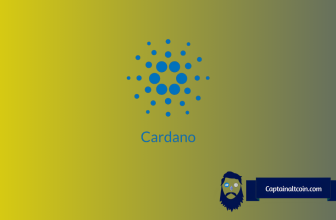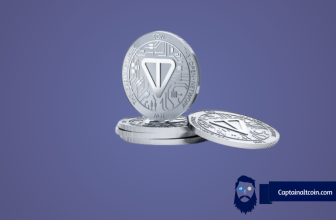Ripple and its “as-a-gift-received” cryptocurrency XRP have been beaten with many a stick in the past. Their cult-like following, their scummy marketing strategies, and their phantom partnerships/MoUs with the oh-so-hated-in-crypto banks/traditional finance have been covered far and wide. Additionally, crypto folk are bothered by Ripple’s constant attempts to “bully” everyone into treating the company and the currency as two completely separate entities.
What is the best crypto trading bot?
No matter how many times Brad Garlinghouse tells you the opposite, there is ample proof that XRP is quite centralized and in control of its parent company. While most of the community likes to focus on the fact that Ripple owns 60% of XRP’s total supply, perhaps the most damning fact exposing this currency’s centralization is its lack of decentralized mining.
What you'll learn 👉
About mining
Mining is an essential element of any true, decentralized cryptocurrency. It represents a process during which transactions are verified and added to a blockchain with the help of a miner. A miner is a computer node that competes with other crypto miners to solve complicated mathematical problems with the help of cryptographic hash functions; the first miner who cracks this problem will get to verify and add the transactions to the blockchain in the form of a block.
This concept is as old as crypto; Bitcoin introduced mining way back in 2009 and it has proven itself to be the safest, most decentralized way of managing a public blockchain. The system behind this entire process is called Proof-of-Work (PoW) consensus algorithm; it lets miner nodes “prove” they gave their processing resources to the network, for which they receive payment in form of newly-minted Bitcoin each time a new block is added to the blockchain.
While PoW algorithms and cryptocurrency mining certainly have issues (like not being suitable for young crypto projects, being slow and somewhat energy wasting, and recently struggling with centralization themselves due to major mining pools) they are still widely considered as the most decentralized, safe and fair methods of validating public blockchains.
Is XRP is a PoW currency?
XRP isn’t a PoW currency. Therefore, it is impossible to mine XRP via a Bitcoin-like network of decentralized public nodes. Ripple chose to run XRP on a centralized, pseudo-private blockchain. This blockchain is validated by a consortium of nodes, nodes that support the so-called Proof-of-Correctness algorithm. More commonly known as Ripple Protocol consensus algorithm (RPCA), it is applied every few seconds by all nodes in order to maintain the correctness and agreement on the network. Once consensus is reached the current ledger is considered “closed” and becomes the last-closed ledger.
While you are here, have a look at our Ripple [XRP] price prediction for 2020.
RPCA depends heavily on what is called Unique Node List or UNL. UNL’s are the “god nodes” of the XRP ledger, as they are basically the ones that get to maintain the consensus and vote on blockchain-related issues. While there are “stock” community-run nodes on the network as well, they do not participate in consensus or voting. Both types of nodes run on Ripple’s “open source” software called rippled; each stock node is connected to one UNL node it “trusts”, serving as public API access/support/back-up points for the network validator.
What all of this means is that XRP operates on an algorithm that is somewhat of a hybrid between PoW and Delegated-Proof-of-Stake, except without the rewards of either. UNL’s are basically “trusted” nodes that were handpicked by Ripple to perform XRP ledger validation. It is actually impossible to formally onboard your node as a validator, as Ripple retains all the right to provide necessary “recommendations and best practices”.
The centralization becomes apparent when you realize that rippled node software can be modified only at the behest of Ripple, as they control who can access the official source code and thoroughly audit it before implementing changes. While this is prudent in the sense that it ensures the software is squeaky clean, it certainly isn’t decentralized, as ultimately all code changes have to be validated by the UNLs.
The network has a total of 26 UNL’s, which are either Ripple-controlled nodes or nodes that were “graced” with the duty to help maintain the XRP ledger. You can check out the complete list of XRP UNLs for yourself here. Ripple has been busy lately with efforts to “decentralize” the UNL network, as company-controlled validator nodes currently make out 27% of the total list. Disregarding the fact that OTHER 73% ARE HAND PICKED BY RIPPLE to validate the ledger, there is an interesting dynamic at play here; as XRP validator network needs 80% majority to close a ledger, theoretically Ripple still has enough control to singlehandedly stop the consensus.
Set it and forget it – how good is the Haasbot trading bot?
As XRP has a pre-mined, fixed supply of 100 billion tokens, there are no mining rewards for the validator. Additionally there are no staking-like rewards as Ripple hand picks its UNLs, giving them the task “to preserve and protect the stable operation and sensible evolution of the network”. Ripple’s development papers claim that validator nodes just have to wait for XRP to become “successful and widely used for interbank settlement” before they can hope to receive an unidentified incentive for ensuring the stability of the XRP blockchain.
To conclude…
All the points listed above clearly show you just how centralized the XRP ledger actually is. While you can technically mine other PoW cryptocurrency on some pools and get paid for it in XRP, the currency is unmineable on its own. Overall, Ripple’s little financial project is definitely a functional centralized asset that has the potential to allow near instantaneous cross-border transfers and almost fee-less transactions. What XRP definitely isn’t is a decentralized, trustless cryptocurrency that should or can lead the crypto evolution in the direction Satoshi originally envisioned.







Simply not true, you make the default UNL be something special, but it isn’t, every validator is free to change it. Why is captainaltcoin so determined in this smear campaign against XRP?
The default UNL is special – if you are not in agreement with it, you will end up on the insulated chain that no one will accept and you will stay there until you swap validators from your list, one by one, with the validators from the default, Ripple controlled UNL. Which makes XRP a centralized ledger.